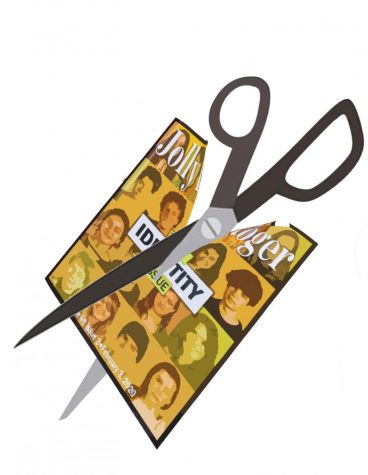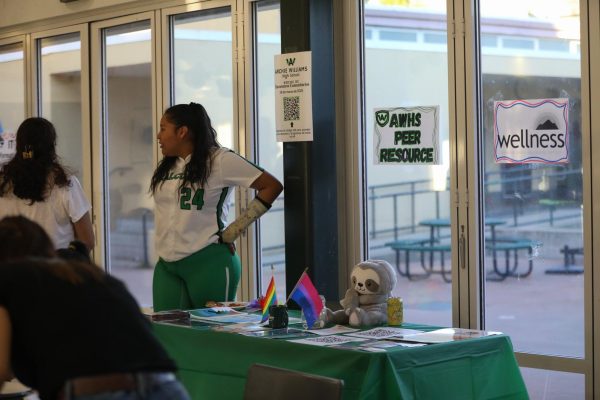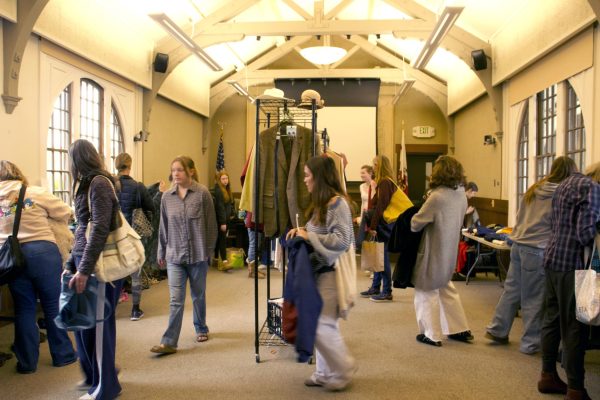Budget cuts bring drastic changes to TUHSD journalism programs
On the evening of April 28, the Tamalpais Union High School District (TUHSD) Board of Trustees made the final decision to cut release periods for journalism and leadership advisers, global studies teachers, instructional coaches, and other district programs like Team.
Due to the failure of the parcel tax known as Measure B, budget cuts were necessary to provide funds for students in the Tam District. Additionally, with an economic recession ahead due to the coronavirus, the district would need to cut about 1 million dollars, according to the Board of Trustees.
Beginning in late March, journalism programs across the district protested the board’s choice of cuts. Through Change.Org petitions and fervent signs and speeches at board meetings, the programs tried their best to influence the board’s decision. However, these efforts made little difference.
As Tara Taupier, TUHSD Superintendent, stated on Apr. 28, the district faced an incredibly difficult decision. By eliminating the Team program the release periods, the board has begun to cut everything that makes the Tam District special, said Mr. Steinhart, the Tam News adviser.
After seventeen years in the district, Steinhart decided to resign from his position as the Tam News adviser due to the budget cuts.
“When the release periods are cut, that automatically means all advisors are essentially going to be asked to work overtime… Every year teachers are asked to do more with less. At a certain point I have to say no. I can’t give any more than I’m already giving. I physically and mentally can’t handle the stress of running a 200-person journalism program on top of a full time teaching workload,” Steinhart said.
Steinhart stated that he previously spent 20 hours of extra time after school during each production week, which is the week the print issue is put together before it goes to the printer, plus additional hours weekly for online publishing. Emily Stull, a Tam High sophomore and feature editor for the Tam News, says that without the release period, the print edition of the Tam News will no longer exist.
They plan to produce PDF versions of the Tam News, but they will not go to the printer. Without the print edition, Stull said that the Tam News won’t be able to reach the community like it did before.
“Having a lot of different points of outreach for people to receive news is very important to having an informed community. So, the fact that the Tam News and all of the [Tam District] newspapers will not have a print issue is a huge disadvantage to our community[…] It’s saddening because the print issue is probably the most read in terms of Tam students. The students don’t go online to the Tam News website[…] They read the print issue. So the fact that we won’t have that print issue means that many students won’t be reading the content,” Stull said.
Sonja Hutson, an Editor-in-Chief of the Tam News during the 2013-2014 school year and now a professional journalist, also believes that without the print edition, the Tam News’ readership will decrease.
“The other aspect of this is I think just making the Tam News and other student publications throughout the district accessible to students. When you’re going out and physically handing out papers to students, you’re increasing the number of people who are likely to read it rather than just having it online,” Hutson said.
Just across the freeway from Tam, Redwood Bark students are planning to continue with the print edition. However, the process will look different without the release period.
“It’s going to be a lot more virtual in terms of how we operate. So, one of the silver linings in this coronavirus pandemic is that we are experimenting with how we operate virtually… The nice thing now is that we’re so in tune with technology that the transition will be pretty easy,” Drake Goodman, Redwood senior and an Editor-in-Chief of the Bark, said.
Even though the Bark is planning to continue with the print edition, other aspects of the class will change. Erin Schneider, the Bark’s adviser, highlighted how she expects relationships in the class to shift.
“Each year I mentor students to run the program and it’s really inspiring because I get to watch them grow as leaders. Unfortunately, with no release period I’m losing the time to connect on a personal level with the student leaders and to guide them through that leadership process,” Schneider said.
Schneider also brought to light equity and community issues that will arise due to the loss of a release period. As the Bark plans to transition to more online and at-home work on the print issue next year, there may be students who can’t participate because they don’t have access to the technology and software used in class.
Additionally, when working from home, students will not be able to interact in person with their classmates. This is especially important, as Schneider said, for getting feedback on the layout of a page or the highlights of a photo.
“It’s more of [the students] working in their own zones from their computers in their bedrooms at night which, as we all know, after this shelter in place, can be depressing. It can be really hard not having a sense of community around you as you’re trying to be creative,” Schneider said.
Back in January when Measure B was first introduced, many believed that the Tam District did not need the extra 190 dollars a year the parcel tax would cost homeowners. But seeing as the district made over one million dollars in budget cuts, they hoped the community would vote in favor of the students. Steinhart, when asked about his feelings after the budget cuts, said that he’s not upset with the board’s decision, but rather with the voters.
“I am furious with our community — our voters…To vote against a parcel tax is lazy thinking and it’s mean, and it’s cruel, and it’s shortsighted,” Steinhart said.
Schneider also believes that the board was stuck between a rock and a hard place after the failure of Measure B.
Schneider said, “I just really hope that the blame doesn’t entirely fall on the superintendent or the board, but that we can all dig deep and see that the root of this is our community not all understanding our needs and trusting that their money is working for the community’s good.”

Melissa Auchard, a senior, is in her second year of journalism. When she’s not training for track she likes to spend her time reading, baking, or surfing....








Victor Nunes • Aug 19, 2020 at 2:50 AM
Sorry to see the Jolly Roger being cut.
The Board should found the Journalism instead of wasting school funds to change the name of a GREAT SCHOOL ” SIR FRANCES DRAKE “.
S.F.D.H.S. class of 1972